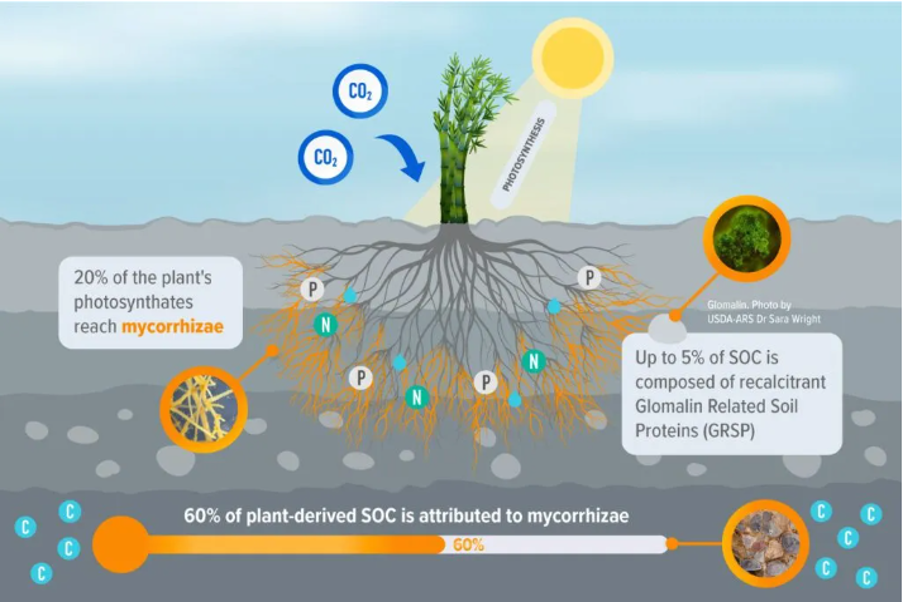Guest Post: Rising CO2 Levels - The Earth’s Biggest Threat and How Farmers Hold a Solution Beneath Their Feet
The word mycorrhizal relates to "myco" (fungi) and "rhiza" (root). It refers to the symbiotic relationships that fungi have with plant roots, aiding the absorption of nutrients and helping them grow.
Climate change is THE single biggest threat facing our planet, and as custodians of large areas of rural land, growers and farmers have a unique opportunity to positively influence the global climate crisis.
The increasing level of carbon dioxide (CO2) in our Earth’s atmosphere has become an existential concern. While the earth’s natural carbon cycle moves a staggering amount of carbon dioxide around the planet (around 100 billion tons!), the problem is that human activities have upset this natural cycle, causing atmospheric CO2 levels to rise. Basically, we are adding carbon to the air faster than the planet’s sinks can absorb it.
The Solution Is Beneath The Surface
Carbon storage is often associated with tree planting and we know that plants absorb carbon through their leaves via photosynthesis. But the real carbon storage heroes are hidden under our feet. Soil, along with the oceans, is an important carbon sink for the planet, capable of storing more carbon than vegetation alone. Soil contains almost two times as much carbon as the atmosphere, living flora, and animals combined. And the good news is that the healthier the soil, the more carbon it can store.
The key to capturing this carbon is the symbiont connections of plants with living organisms, specifically Mycorrhizal Fungi webs and the glycoproteins they secrete. However, modern-day farming practices have stripped much of our soil’s carbon-storing capacity through the disruption of the essential rhizospheric ecosystem, which is crucial for plant vitality and crop well-being.
This delicate ecosystem can be revitalised by the simple addition of Mycorrhizal fungi when crops are being planted. The fungi form a symbiotic alliance with the plants that stimulates and accelerates root growth, producing Glomalin, a true hero in carbon storage. By gluing soil particles and organic matter together, Glomalin stabilises soil and keeps carbon from escaping into the atmosphere, known as carbon permanence. This carbon remains stored well after trees and plants have died.
“Mycorrhizae contribute up to 60% of all plant-derived soil organic carbon”
Agricultural soils can capture up to 8 gigatons (Gt) of CO2 equivalent each year, countering emissions from global transportation. In addition, wetlands, though they cover only a small portion of the Earth, hold a substantial amount of organic soil carbon, and there’s potential for substantial carbon storage by focusing on how we manage croplands and grasslands.
Mycorrhizae contribute up to 60% of all plant-derived soil organic carbon, which is securely stored within glycoproteins, remaining stable even after decades of farming practices. Recognised in the Verra Verified Carbon Standard Program, mycorrhizal inoculants are accepted as a valid method for sequestering carbon in the soil.
A simple diagram below shows how Mycorrhizal fungi work in trapping carbon. Compared to untreated plants, Mycorrhizal fungi create a tangible difference in the soil structure, nutrient trapping, Phosphorus in particular, and overall plant growth.
The importance of maintaining healthy soil, teeming with a complex ecosystem of fungi, bacteria and other microorganisms, is evident to anyone who works with soil. Research and field trials have shown substantial benefits to growers by adding beneficial fungi and bacteria to their planting programs. Read our numerous field trials here.
These beneficial organisms pay farmers back in dividends with improved soil structure, reducing erosion and enhancing water retention. The result? Increased yields, nutrient-dense produce, and enhanced disease resistance, all ensuring a sustainable approach to farming for generations to come.
You Can Help The Earth And Benefit Too
Mycorrhizal fungi form symbiotic connections with plants, playing a vital role in the carbon storage process. This mechanism of sheathing the roots and then sending long threads into the soil doesn’t just help with carbon storage, though! There are a myriad of health benefits for you, your plants and your soil.
Apart from occupying space so pathogens can’t come close to the plant roots, Mycorrhizal fungi reach and dissolve hard to assimilate nutrients from within the soil so they can be passed onto and be more easily absorbed by the plants. This results in less fertiliser needing to be applied and nutrient-dense produce.
One effective way to combat climate change and positively affect your crops is by incorporating mycorrhizal fungi and beneficial organisms into your planting program.
Roots, Shoots & Fruits’ have a range of Mycorrhizal and beneficial bacteria and fungal products to bring your soil back to optimum health, creating positive soil for your farming operation and the planet. Click here to visit our website to read more about these amazing microorganisms and all of our products.


